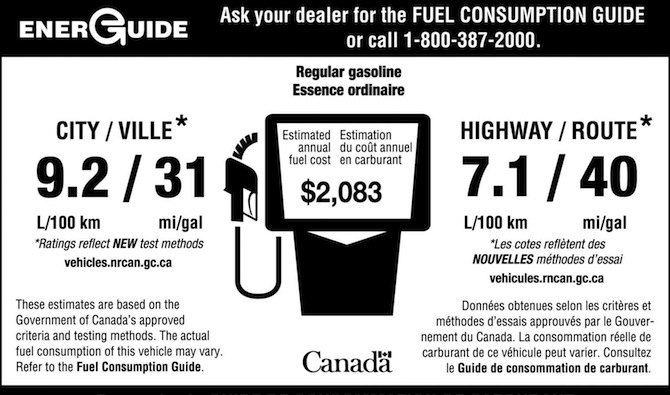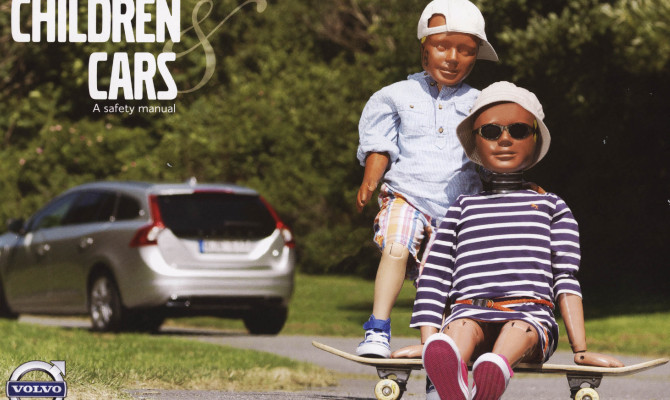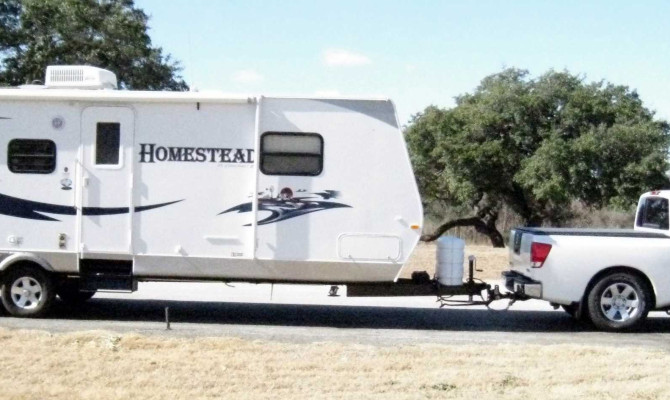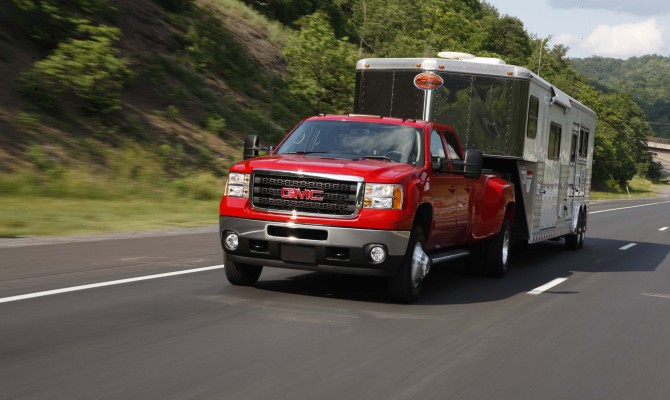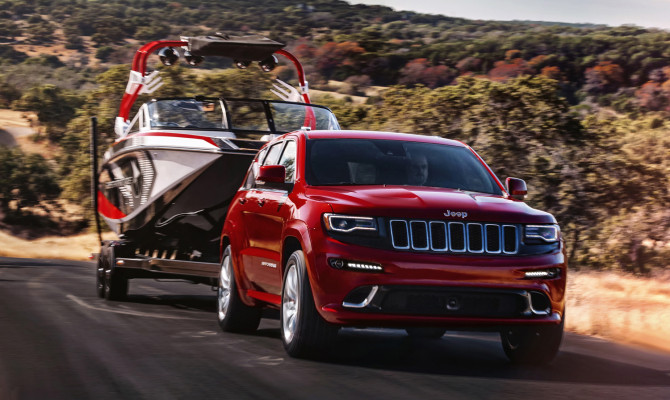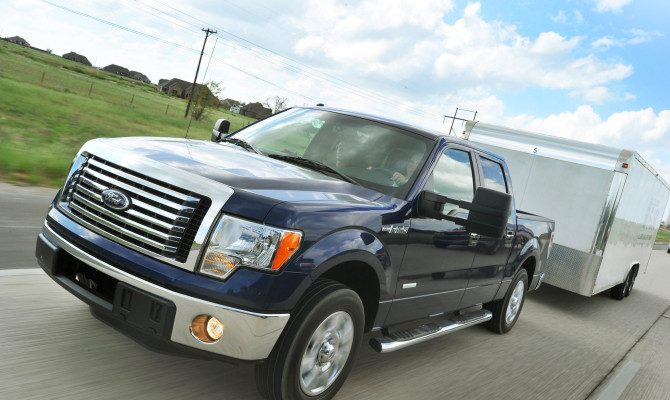Western Canada’s best attended consumer show brings together engaged and excited visitors over a six-day period where they can see hundreds of different car brands under one roof, manufacturers and dealers see the Vancouver International Auto Show as a major boost to the industry they cannot afford to ignore.
“The incentives are expected to reduce greenhouse gas emissions by the equivalent of taking 1,400 cars off the road…”
(more…)
“The 2015 Acura RLX Sport Hybrid SH-AWD would be my personal “primo-green” pick, if I were lucky enough to have a spare $50K stashed away…”
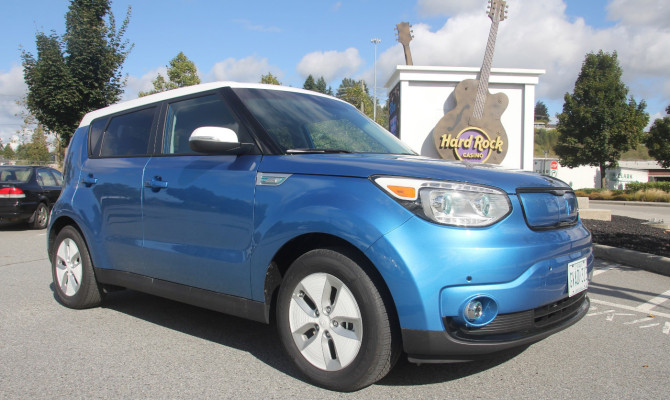
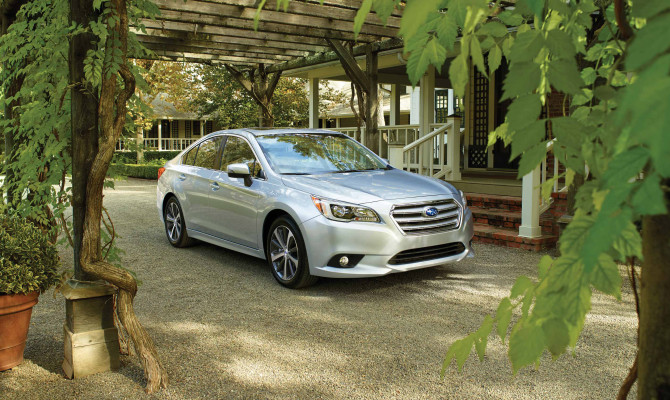
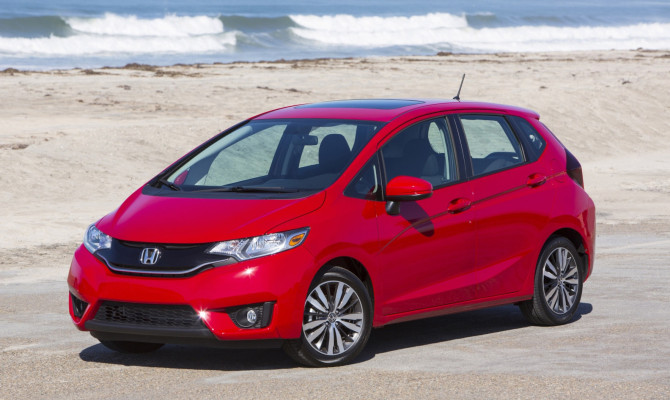
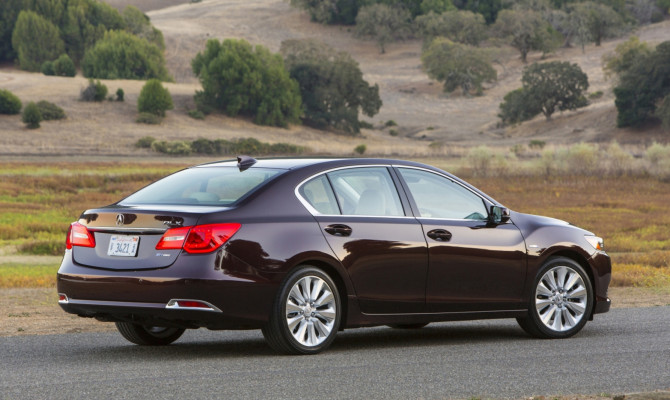
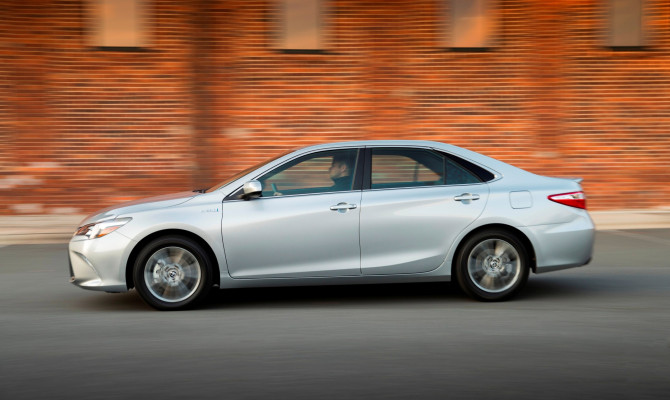
Good news for B.C. auto buyers who want a “green car” – a $7.5 million fund was set aside in Victoria’s provincial budget, in order to bring back a government incentive program that offered point of sale rebates to buyers of plug-in hybrids, electric vehicles and fuel cell vehicles.
The previous rebate plan expired last spring and details of the new plan are expected to be announced at the Vancouver auto show.
Here are five new-to-market vehicle choices with “green” aspirations. The first four are finalists for the AJAC Green Car of the Year Award, which will also be announced in Vancouver at the auto show next week.
The 2015 Acura RLX Sport Hybrid SH-AWD would be my personal “primo-green” pick, if I were lucky enough to have a spare $50K stashed away.
2015 Honda Fit
Honda Fit may be small on the outside, but its organic shape and an ingeniously versatile seating system makes the most of every bit of interior space. The new Fit also consumes even less fuel, due to a new powertrain and a lighter yet more rigid new body.
A 1.5-litre engine that can produce 130 horsepower and 114 lb-ft of torque, powers all Fit models. Fuel economy is rated at 7.0/5.7/6.4 L/100km (city/highway/combined) with the new Continuously Variable Transmission (CVT).
Members of the Automobile Journalists Association of Canada (AJAC) have already voted Best New (2015) Small Car (under $21,000) the Honda Fit.
2015 Kia Soul EV
This is a clever electric vehicle adaptation of Kia’s tall 5-door compact car with the funky styling. Soul EV offers the same, user-friendly features as its gasoline counterpart, with seating for four or five and a large rear cargo area. Kia’s polymer (electrolyte) lithium-ion battery pack is compact and easier to hide, as is can be molded into different shapes. In Soul EV it’s centrally fitted under the rear seats and a raised rear floor pan.
The liquid-cooled AC synchronous permanent magnet electric motor can generate a whopping 210 lb-ft of torque. That’s 59 lb-ft more than the gas engine version of Soul. Yet, its impressively smooth and standing starts are not as jumpy as other electric vehicles. Soul EV has a claimed driving range of 149 km on a single charge.
2015 Subaru Legacy
The redesigned Subaru Legacy won the overall 2015 Canadian Car of the Year Award. A substantial improvement in fuel economy was achieved through a variety of engineering initiatives that included an impressive new (Lineartronic CVT) automatic transmission. It’s also the only car in the “family car” market segment that comes with standard all-wheel-drive.
Legacy was engineered in Japan and is built in the USA in an award winning production facility, for environmental excellence, in Indiana. In fact, the entire 832-acre plant site is designated a Backyard Wildlife Habitat by the National Wildlife Federation.
2015 Toyota Camry Hybrid
Toyota has rebuilt the 2015 Toyota Camry from the ground up. It’s a sportier, better handling Camry with a striking new design and a passenger cabin that Toyota claim is the quietest-ever. The Hybrid editions come in three model grades and a starting price of just $28,710.
Camry Hybrid is powered by a 2.5-litre four-cylinder Atkinson Cycle engine linked with Hybrid Synergy drive and matched to an E-CVT. Fuel economy is rated at an amazing 5.7 L/100km (which is about 50 mpg) in the city and 6.0 L/100km on the highway.
2015 Acura RLX Sport Hybrid SH-AWD
Acura has linked its superb electronic (torque vectoring) Super Handling All-Wheel Drive (SH-AWD) system with a new hybrid powertrain in this all-new version of the RLX. The gas engine is a 3.5-litre V6 with Variable Cylinder Management and it’s linked to a seven-speed dual-clutch transmission.
This is the most powerful Acura production sedan ever built and has a claimed combined (gas + electric) peak output of 377 horsepower. Yet, its fuel consumption is a miserly 8.0/ 7.5 L/100km (city/highway). A little pricey (starts at $49,990), but amazing!
“While the day was filled with fun and excitement, it also served a greater purpose by developing driving skills that are completely transferrable to the street.”
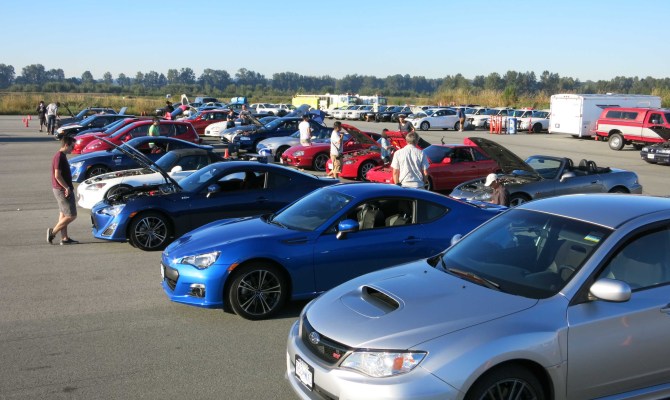
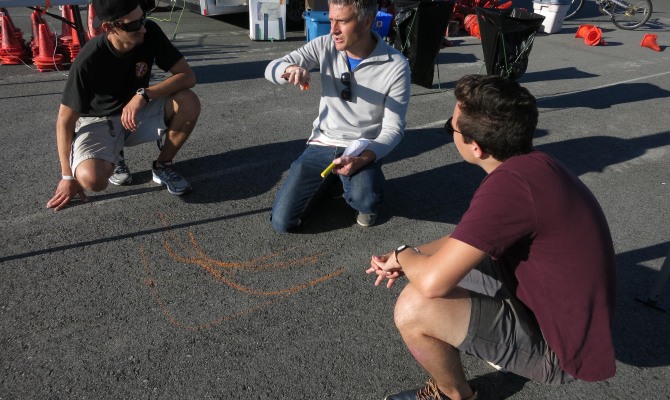
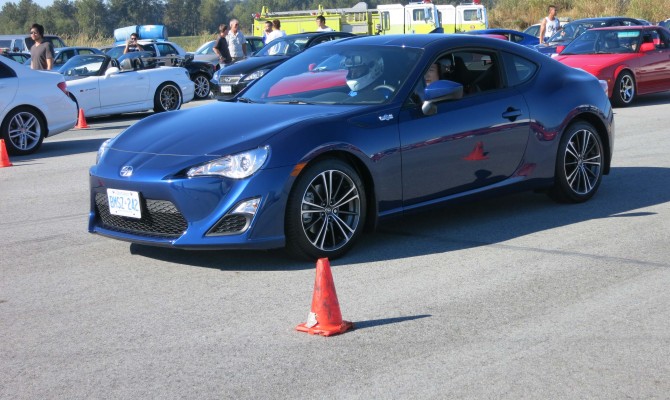
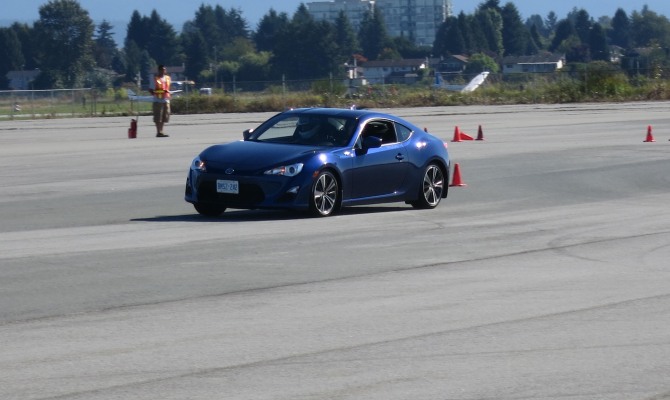
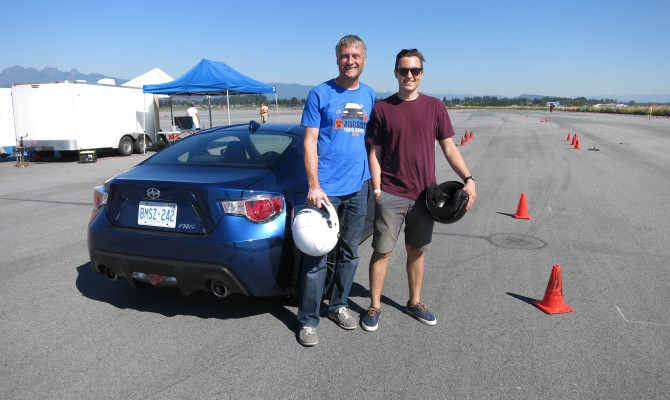
by Rob Rothwell, Driveway Canada
**********
Octane-fuelled learning crosses age and gender boundaries
With comments such as “amazingly passionate” and “best prof ever” peppered throughout the reviews on Rate my Professor, UBC’s physics/engineering Prof Dr. Andre Marziali clearly scores top marks from his students. However, his rave reviews extend beyond the walls of academia to the pavement of the Pacific Traffic Education Centre (PTEC), abutting the Pitt Meadows Airport. (more…)
“The Government of Canada has finally approved the five-cycle test method, already used in the U.S. since 2008…”
A new fuel consumption rating system kicks in for all 2015 model year new cars and light trucks. The Government of Canada has finally approved the five-cycle test method, already used in the US since 2008. In general, those predicted fuel consumption figures on the EnerGuide label (on every new vehicle) will increase somewhere in the 10 to 20 per cent range, compared to a similar, or even identical, 2014 model year vehicle. (more…)
“The massive bear strained to see through the dust and make out where the noise came from, lifting his noise in an attempt to pick up my scent…”
One nice hot sunny day in August found me in the Upper Squamish valley, four wheeling and fishing along the river.
Nothing out of the ordinary happened until a fish and wildlife officer pulled up next to my truck, walked over to the river bank to ask me how the fishing was going. I showed him one Dolly Varden trout that was about 12 lbs and told him I hadn’t had a bite for the past hour. He smiled, wished me good luck and warned me to be careful, as there has been bears in the area including a grizzly. I smiled and said thanks.
Two minutes after he left, I was looking over my shoulder every thirty seconds. I decided to pack up and try somewhere else. I climbed back into my truck and proceeded down the road. The conditions were very dusty and the narrow logging road was covered in a heavy coating of dust. A short way up the road I felt a sneeze coming on. I pulled over and proceeded to sneeze. The vehicle windows were down and it was loud enough to echo through the dust covered tall grass to the left of me.
To my surprise, a black bear stood up in the tall grass. He must have been two metres tall judging from the height of my truck. The massive bear strained to see through the dust and make out where the noise came from, lifting his noise in an attempt to pick up my scent. I watched him for about a minute although it seemed like an hour had past. As quickly as he popped up, he was down again and out of sight.
I wanted to make sure he was gone before I moved on, so I gave a toot on my horn. Up goes the massive bear again looking around. He was a lot closer this time, so I laid into the horn and revved up my engine.
At first he continued to stand tall but soon realized it wasn’t worth the effort to continue. He darted off and I watched him head back towards the river. I continued on the road for another 10 minutes and around a tight corner, still thinking about the bear when all of a sudden I see a big patch of black sprinting in front of my truck. I eased up on the throttle and watched another bear running down the road. He was quite scared so I gave him lots of room. He jumped off the road and down a steep hill taking out several small trees on the way down. I felt a little sorry for him having to do that. I couldn’t see him anymore but I was sure he was ok.
The idea of fishing was suddenly less appealing. After all two bears in one day were enough. I usually do not see any. The two-hour drive back produced another four bears in different positions along the road.
The moral of this story four-wheeling is fun but be careful out there, especially in bear country… which is virtually everywhere in B.C.
“Four lucky readers will put a Dodge Journey’s weekend-getaway abilities to the test around the Vernon area, during a stay at the luxurious Sparkling Hill Resort…” (more…)
Camping is a great way to relieve some stress and spend time enjoying the great outdoors.
Some children complain about being taken from their video games or television programs, but the experience is one they will remember for a lifetime.
You don’t have to be an avid outdoorsman or spend a lot of money to go camping. Load your truck with a good tent, warm sleeping bag, and good food and you are on the road to a good time. If it’s your first time out pick a spot that’s not too far, maybe about an hour away.
Check the internet for the best locations and book your spot to avoid disappointment when you get there. Most sites have attractive locations such as a lake, ocean, or a river close by that you can plan hikes together. This will provide family activities for the day.
A good tent will make the trip that more enjoyable. If you don’t own one then here a few things to know about them, A-frame tents are usually smaller and can sleep two or three. They have a screened door and a small-screened window to keep mosquitos out. Remember to close the door after entering or exiting or you will be sleeping with them. Most A-framed tents come with a fly, which is waterproof material to cover the outside of the tent. If you’re camping on the coast bring a heavy duty tarp to help with the rain.
Dome tents utilize flexible poles that provide a strong structure when completed and can withstand stronger winds. You can also have larger dome tents that can be separated into rooms with hanging walls.
Cabin style tents are much heavier but provide much more headroom and more space, the down side to these tents are they are heavy, so plan on driving right to your campsite and you will be ok.
I recommend shopping around to see the tent that best fits your needs remembering you need enough space for your family and gear. A sleeping pad or air mattress will help make a good sleeping bag feel more comfortable. Be sure to purchase one that is full length so you are not constantly rolling off during the night.
Preparing food is fun. For safety’s sake, make sure you set up your stove in a level area to avoid any mishaps. If it’s your first time then bring foods that are simple to prepare. A typical propane stove has two burners and a propane tank attached to the side. These are easy to clean and just as easy to pack away.
Remember to bring lots of garbage bags so you can either take it home with you or use proper facilities at your campsite. Be sure to put your food away in your car preferably so as not to attract unwanted animals. Clean the area before you go to give the next person the same experience you enjoyed on your camping adventure.
At a speed of just 40 km/h, a child that weighs only 30 kgs will suddenly weigh the equivalents of a tonne (1,000 kgs) in a collision…
Car smashes are the leading cause of accidental death among children in British Columbia.
According to government statistics, every year more than 1,300 children under nine are injured or killed. Putting that in scary perspective, that’s the equivalent of around five elementary schools.
It’s estimated that the proper use of child car safety seats reduce the risk of injury by a massive 85 percent and death by 70 per cent. Very frightening then to contemplate that around five percent of parents don’t put their children in seats and of those that do, more than half improperly install them.
It’s an issue to which I’m particularly attuned after the recent birth of my first grandson. I found myself grappling with a rear facing car seat – as legally required! After a few bruised knuckles and bruised head from bashing it on the door frame, Francis was installed safely as was his seat.
For years, the BC Automobile Association Child Passenger Safety Program has provided solid information, resources and training to make ensure parents do install these lifesavers correctly (http://www.bcaa.com/road-safety/child-passenger-safety/overview).
Now Volvo has produced a fabulous safety manual called Children & Cars, which is available free of charge at any Volvo dealership. Thoughtful and fascinating text imaginatively illustrated throughout with photos of child crash test dummies dressed in trendy attire.
It was penned for Sweden but the text in the Canadian version has been adapted to reflect our laws. While it is required here that children under 12 months must be placed in a rear-facing seat, it’s acceptable for children aged one to transfer to a forward facing seat. The Swedes take issue with that and say it’s better they stay in a rear facing seat as long as possible, often beyond three years.
The booklet explains that a baby’s head is large and heavy in relation to the rest of its body but its neck is just not strong enough to deal with the forces that would rock it in a frontal collision. And a detailed diagram of how neck vertebrae develops sure bolsters that assertion. In fact, the author argues we probably all should travel backwards for safety’s sake!
This was a revelation: at a speed of just 40 km/h, a child that weighs only 30 kgs will suddenly weigh the equivalents of a tonne (1,000 kgs) in a collision. Imagine that baby as an unrestrained project . . . no don’t, it’s just too gruesome.
Whether you tow a boat, car, snowmobiles, or motorcycles, custom truck accessories can make towing less nerve-wracking…
Camping season is almost upon us – well, maybe it already is – and it will soon be time to take that trailer out for some fun times.
But is it fun for the driver?
Towing a trailer may be one of the most stressful driving situations for many truck owners. For one thing, it is not easy to manouevre around corners and change lanes with that extra length behind your truck. Backing up also can be challenging and towing up a steep hill can be tough on your truck. Whether you tow a boat, car, snowmobiles, or motorcycles, custom truck accessories can make towing less nerve-wracking.
Don’t Tow Too Much Weight
Pulling too much weight can be very dangerous. Check your owner’s manual to find your vehicle’s towing capacity, including the maximum gross trailer weight and tongue weight it can handle. Tongue weight is the downward force exerted on the hitch ball by the trailer coupler. In most cases, it is about 10 to 15 percent of gross trailer weight. Tongue weight of up to 300 pounds can be measured on a household scale by resting the trailer coupler on the scale and placing the scale on a box so that the coupler is at its normal towing height. The trailer must be fully loaded and level.
Use the Right Hitch and Other Equipment
Just as each vehicle has a maximum towing capacity so too does each trailer hitch, hitch ball, ball mount and safety chain. To tow safely, you need to make sure every component you use is ready to handle the weight of your fully loaded trailer. Remember, your towing capacity is equal to the capacity of the weakest link in the system.
Choosing a Trailer Hitch
All trailer hitches feature a class rating, as well as a weight rating, so be sure the hitch can accommodate the loaded trailer. For instance, Reese Class 2 ($159) hitches have a maximum rated capacity of 350 pounds tongue weight and 3,500 pounds gross trailer weight. Class IV ($175) receiver-style hitches have a maximum capacity of 1,200 pounds tongue weight and 12,000 pounds gross trailer weight.
If you need more towing capacity than the traditional receiver-style weight distributing hitch, then you need to step up to a fifth-wheel or gooseneck hitch. Prices start at $650.
Choosing A Hitch Ball
If you have a drawbar style hitch, the hitch ball usually is built right in. But if you have a receiver-style hitch, you’ll need to choose your own hitch ball.
Like vehicles and trailer hitches, hitch balls also are assigned a maximum tongue weight and gross trailer weight rating.
Hitch balls are made from a variety of materials, and some are available in a choice of finishes, including chrome. They cost is $12 to $14.
The hitch ball diameter must be the same diameter as the trailer coupler (1 7/8 inches, 2 inches or 2 5/16 inches).
The shank diameter of the hitch ball should be the same as the hole diameter in the ball mount.
The shank length should be long enough to allow at least two threads to be visible when the hitch ball is installed and the nut completely tightened.
Load Your Trailer Properly
Rule of thumb is roughly two-thirds (60 to 66 percent) of the gross load weight should be positioned toward the front half of the trailer. Place large or heavy objects on the trailer first. Tie these objects down securely and from several angles to ensure they do not shift. Pack remaining items in a manner that maintains balance of the trailer. Once the trailer is loaded, double-check the positioning and stability of the cargo. Better safe than sorry.
Recent Comments
- { Enjoyed your Forest of Bowland in the BMW X5M, particularly the photo of the BMW in front of the main part of Stonyhurst College where... }
- { Bantam designed the Jeep, not Willy's or Ford. The American military gave the original Bantam prototype to Willys and Ford to copy. There is plenty... }
- { All Escalades come with a 6.2-lilter V8 engine that produces 420 horsepower. A six-speed automatic is the only transmission offered and drives the rear wheels.... }
- { Alexandra is an excellent journalist. }
Popular Posts
- Journey to a ‘Sparkling’ Luxury Okanagan Resort “Four lucky readers will put a Dodge Journey’s weekend-...
- The Need For Speed: Hike Those Highway Limits More than half of those polled believe the province sho...
- Drives-U-Crazy… Erratic drivers. An early morning drive from Kelowna to Vancouver is nor...
- Readers Respond: The Pros and Cons of Increasing B.C. Speed Limits Increasing the speed limits will only increase risk to...
- Honda CR-V Review: The Compact Crossover To Get Things Done The CRV is a very stylish and aerodynamic crossover veh...


